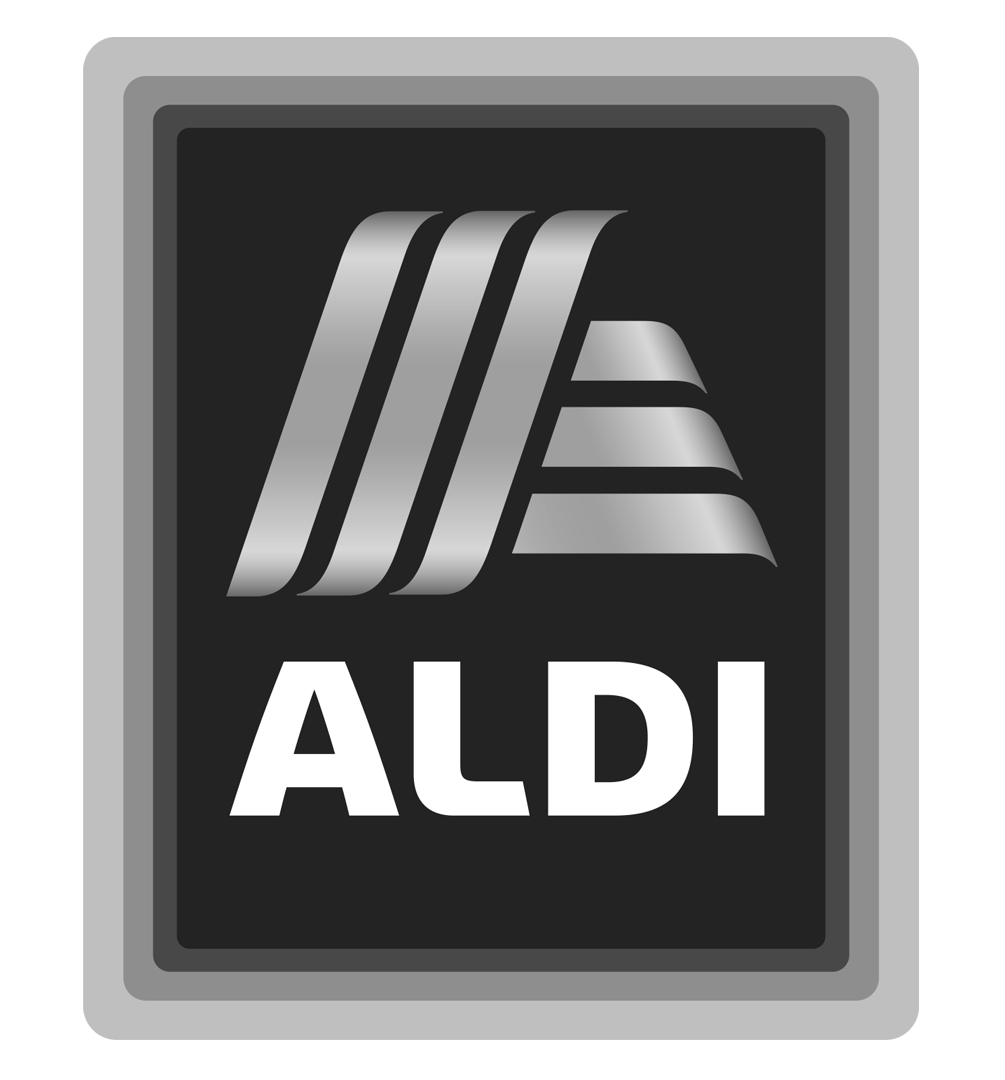Microsoft 70-461: Querying SQL Server 2012
Module 1
- 1.1 Introduction to SQL Server 2012
- 1.2 SQL Instances
- 1.3 Editions and Licensing
- 1.4 SQL Server Objects
- 1.5 System Databases
- 1.6 SQL Server Data Tools
- 1.7 Object Explorer
- 1.8 Object Scripting
- 1.9 Template Explorer
- 1.10 Query Tabs
- 1.11 Projects and Solutions
- 1.12 Customizing SSDT
- 1.13 Debugging T-SQL
- 1.14 SQLCMD
- 1.15 Exam Scenarios
- 1.16 Module Review
Module 2
- 2.1 T-SQL Overview
- 2.2 T-SQL Elements
- 2.3 Batch Separators
- 2.4 Line Terminator
- 2.5 Variables
- 2.6 Control Flow
- 2.7 Expressions
- 2.8 Functions
- 2.9 Predicates and Operators
- 2.10 SELECT
- 2.11 Column Aliasing
- 2.12 SELECT Execution
- 2.13 Exam Scenarios
- 2.14 Module Review
Module 3
- 3.1 SELECT Statements
- 3.2 Basic SELECT Statement
- 3.3 Specifying Columns
- 3.4 Derived Columns
- 3.5 Aliasing Columns
- 3.6 Calculated Columns
- 3.7 Ordering Results
- 3.8 Returning Distinct Results
- 3.9 Exam Scenarios
- 3.10 Module Review
Module 4
- 4.1 Filtering
- 4.2 WHERE Syntax
- 4.3 BETWEEN
- 4.4 WHERE Syntax IN
- 4.5 Filtering NULL Values
- 4.6 LIKE
- 4.7 Data Type Comparison
- 4.8 Filtering Data with WHERE
- 4.9 TOP
- 4.10 OFFSET-FETCH
- 4.11 Exam Scenarios
- 4.12 Module Review
Module 5
- 5.1 Join and Set Operators
- 5.2 Using Joins
- 5.3 Categories of Joins
- 5.4 INNER JOIN
- 5.5 OUTER JOIN
- 5.6 JOIN Demo
- 5.7 Set Operators
- 5.8 Set Operators Demo
- 5.9 Exam Scenarios
- 5.10 Module Review
Module 6
- 6.1 Subqueries and Table Expressions
- 6.2 Subqueries
- 6.3 Self Contained Subquery
- 6.4 Correlated Subquery
- 6.5 Subquery Demo
- 6.6 EXISTS
- 6.7 Common Table Expressions
- 6.8 Temporary Tables
- 6.9 Table Variables
- 6.10 Table Demo
- 6.11 Exam Scenarios
- 6.12 Module Review
Module 7
- 7.1 System Functions
- 7.2 Scalar Functions
- 7.3 ROWSET
- 7.4 System Function Demo
- 7.5 Aggregate Functions
- 7.6 DISTINCT
- 7.7 Aggregation Demo
- 7.8 GROUP BY
- 7.9 HAVING
- 7.10 Conversion Functions
- 7.11 Exam Scenarios
- 7.12 Module Review
Module 8
- 8.1 T-SQL Programming
- 8.2 Logical Functions
- 8.3 IIF, CHOOSE and CASE
- 8.4 Logical Function Demo
- 8.5 Using Views
- 8.6 Stored Procedures
- 8.7 Functions
- 8.8 Triggers
- 8.9 Views Demo
- 8.10 TRY CATCH
- 8.11 Exam Scenarios
- 8.12 Module Review
Module 9
- 9.1 Transactions
- 9.2 Introduction to Transactions
- 9.3 INSERT and UPDATE
- 9.4 DELETE and TRUNCATE
- 9.5 Transactions Demo
- 9.6 Managing Transactions
- 9.7 XACT_ABORT
- 9.8 Managing Transactions Demo
- 9.10 Exam Scenarios
- 9.11 Module Review
Module 10
- 10.1 Query Performance
- 10.2 Indexing
- 10.3 Index Strategies
- 10.4 Indexes Demo
- 10.5 Execution Plans
- 10.6 Statistics IO
- 10.7 Execution Plans Demo
- 10.8 Exam Scenarios
- 10.9 Module Review
- 10.10 Program Review
Microsoft 70-462: Administering SQL Server 2012 Databases
Module 1
- 1.1 Introduction to SQL Server 2012
- 1.2 SQL Instances
- 1.3 Editions and Licensing
- 1.4 SQL Server Objects
- 1.5 System Databases
- 1.6 SQL Server Data Tools
- 1.7 Object Explorer
- 1.8 Object Scripting
- 1.9 Template Explorer
- 1.10 Query Tabs
- 1.11 Projects and Solutions
- 1.12 Customizing SSDT
- 1.13 Debugging T-SQL
- 1.14 SQLCMD
- 1.15 Exam Scenarios
- 1.16 Module Review
Module 2
- 2.1 T-SQL Overview
- 2.2 T-SQL Elements
- 2.3 Batch Separators
- 2.4 Line Terminator
- 2.5 Variables
- 2.6 Control Flow
- 2.7 Expressions
- 2.8 Functions
- 2.9 Predicates and Operators
- 2.10 SELECT
- 2.11 Column Aliasing
- 2.12 SELECT Execution
- 2.13 Exam Scenarios
- 2.14 Module Review
Module 3
- 3.1 SELECT Statements
- 3.2 Basic SELECT Statement
- 3.3 Specifying Columns
- 3.4 Derived Columns
- 3.5 Aliasing Columns
- 3.6 Calculated Columns
- 3.7 Ordering Results
- 3.8 Returning Distinct Results
- 3.9 Exam Scenarios
- 3.10 Module Review
Module 4
- 4.1 Filtering
- 4.2 WHERE Syntax
- 4.3 BETWEEN
- 4.4 WHERE Syntax IN
- 4.5 Filtering NULL Values
- 4.6 LIKE
- 4.7 Data Type Comparison
- 4.8 Filtering Data with WHERE
- 4.9 TOP
- 4.10 OFFSET-FETCH
- 4.11 Exam Scenarios
- 4.12 Module Review
Module 5
- 5.1 Join and Set Operators
- 5.2 Using Joins
- 5.3 Categories of Joins
- 5.4 INNER JOIN
- 5.5 OUTER JOIN
- 5.6 JOIN Demo
- 5.7 Set Operators
- 5.8 Set Operators Demo
- 5.9 Exam Scenarios
- 5.10 Module Review
Module 6
- 6.1 Subqueries and Table Expressions
- 6.2 Subqueries
- 6.3 Self Contained Subquery
- 6.4 Correlated Subquery
- 6.5 Subquery Demo
- 6.6 EXISTS
- 6.7 Common Table Expressions
- 6.8 Temporary Tables
- 6.9 Table Variables
- 6.10 Table Demo
- 6.11 Exam Scenarios
- 6.12 Module Review
Microsoft 70-463: Implementing a Data Warehouse with SQL Server 2012
Module 1: Introduction to Data Warehouses
- 1.1 Overview of Data Warehouses
- 1.2 Examine Data Warehousing Concepts
- 1.3 Introduction to Data Analysis and Reporting Concepts
Module 2: Creating Dimensions and Changing Granularity of Dimensions
- 2.1 Create Dimensions
- 2.2 Change Granularity
Module 3: Creating Fact Tables and Column store Indexes
- 3.1 Create Fact Tables
- 3.2 Create Column store Indexes
Module 4: Implementing Data Warehouses in SQL Server 2012
- 4.1 Overview of Data Warehouse Components
- 4.2 Install Integration Services
Module 5: Working with Integration Services
- 5.1 Create an SSIS Project
5.2 Add Packages to an SSIS Project
Module 6: Managing Control Flow
- 6.1 Deploy a Control Flow
- 6.2 Execute Packages from Different Control Flow
Module 7: Working with Dynamic Variables
- 7.1 Create Expressions with Variables
- 7.2 Create Package Templates
Module 8: Implementing Data Flow
- 8.1 Add Data Flow Components to a Data Flow Task
- 8.2 Perform Transformation Tasks
- 8.3 Track Changed Data
Module 9: Managing Data Flow
- 9.1 Add Script Tasks and Script Components to an SSIS Package
- 9.2 Profile OLTP Data
- 9.3 Cleanse Data Using DQS
Module 10: Managing SSIS Package Execution
- 10.1 Execute SSIS Packages on the Server
- 10.2 Configure the Package Execution Strategy
Module 11: Debugging and Troubleshooting Packages
- 11.1 Debug Package Execution Components
- 11.2 Troubleshoot Package Failures
Module 12: Deploying Packages
- 12.1 Deploy SSIS Packages
- 12.2 Examine MSI Packages
Module 13: Securing Packages and Databases
- 13.1 Secure Packages
- 13.2 Secure Databases
Module 14: Working with MDS and Windows Azure
- 14.1 Configure MDS
- 14.2 Work with MDS Databases
- 14.3 Work with Windows Azure
Microsoft 70-464: Developing Microsoft SQL Server 2012 Databases
Module 1: SQL 2012 And The 464 Test
- 1.1 Introduction
- 1.2 Intro to SQL Server 2012 Part 1
- 1.3 Intro to SQL Server 2012 Part 2
- 1.4 Management Studio Demo Part 1
- 1.5 Management Studio Demo Part 2
- 1.6 Management Studio Demo Part 3
- 1.7 Other SQL Server Tools
Module 2: Working with Data Types
- 2.1 Working with Data Types Part 1
- 2.2 Working with Data Types Part 2
- 2.3 Working with Data Types Part 3
- 2.4 Other Data Types
Module 3: Tables
- 3.1 Tables
- 3.2 Creating Tables
Module 4: Data Constraints
- 4.1 Data Constraints Part 1
- 4.2 Data Constraints Part 2
Module 5: Planning in Indexing
- 5.1 Planning in Indexing Part 1
- 5.2 Planning in Indexing Part 2
- 5.3 Planning in Indexing Part 3
- 5.4 Planning in Indexing Part 4
Module 6: Table Structures
- 6.1 Table Structures
- 6.2 Working with Clustered Indexes
- 6.3 Clustered Indexes
- 6.4 Designing Effective Clustered Indexes
Module 7: Improving Performance with Non-Clustered Indexes
- 7.1 Improving Performance with Non-Clustered Indexes Part 1
- 7.2 Improving Performance with Non-Clustered Indexes Part 2
- 7.3 Improving Performance with Non-Clustered Indexes Part 3
Module 8: Using Indexes and Execution Plans
- 8.1 Using Indexes
- 8.2 Execution Plans Part 1
- 8.3 Execution Plans Demo
- 8.4 Execution Plans Part 2
Module 9: Working with Views
- 9.1 Working with Views Part 1
- 9.2 Working with Views Part 2
Module 10: Designing and Implementing Stored Procedures
- 10.1 Designing and Implementing Stored Procedures Part 1
- 10.2 Designing and Implementing Stored Procedures Part 2
- 10.3 Designing and Implementing Stored Procedures Part 3
Module 11: Merging Data and Passing Tables
- 11.1 Merging Data and Passing Tables Part 1
- 11.2 Merging Data and Passing Tables Part 2
- 11.3 Merging Data and Passing Tables Part 3
Module 12: Designing and Implementing User Functions
- 12.1 Designing and Implementing User Functions
Module 13: Creating Highly Concurrent SQL Server Applications
- 13.1 Creating Highly Concurrent SQL Server Applications Part 1
- 13.2 Creating Highly Concurrent SQL Server Applications Part 2
- 13.3 Creating Highly Concurrent SQL Server Applications Part 3
Module 14: Handling Errors in TSQL
- 14.1 Handling Error in TSQL Part 1
- 14.2 Handling Error in TSQL Part 2
Module 15: Triggers
- 15.1 Triggers
Module 16: Implementing Managed Code
- 16.1 Implementing Managed Code Part 1
- 16.2 Implementing Managed Code Part 2
- 16.3 Implementing Managed Code Part 3
Module 17: Storing XML in SQL
- 17.1 Storing XML in SQL Part 1
- 17.2 Storing XML in SQL Part 2
- 17.3 Storing XML in SQL Part 3
Module 18: Querying XML
- 18.1 Querying XML Part 1
- 18.2 Querying XML Part 2
- 18.3 Querying XML Part 3
Module 19: Working with the Spatial Data
- 19.1 Working with Spatial Data Part 1
- 19.2 Working with Spatial Data Part 2
- 19.3 Working with Spatial Data Part 3
Module 20: Working with Full Text Indexes and Queries
- 20.1 Working with Full Text Indexes and Queries Part 1
- 20.2 Working with Full Text Indexes and Queries Part 2
- 20.3 Working with Full Text Indexes and Queries Part 3
- 20.4 Outro
Microsoft 70-465: Designing Database Solutions for Microsoft SQL Server 2012
Module 1: Designing A Database Server Infrastructure
- 1.1 Introduction
- 1.2 Designing A Database Server Infrastructure Part 1
- 1.3 Designing A Database Server Infrastructure Part 2
- 1.4 Designing A Database Server Infrastructure Part 3
- 1.5 Designing A Database Server Infrastructure Part 4
- 1.6 Considerations for Database Server Consolidation
- 1.7 Managing Server Resources
Module 2: Designing A Logical Database Scheme
- 2.1 Designing A Logical Database Scheme Part 1
- 2.2Designing A Logical Database Scheme Part 2
- 2.3 Designing A Logical Database Scheme Part 3
- 2.4 Designing A Logical Database Scheme Part 4
- 2.5 Designing A Logical Database Scheme Part 5
Module 3: Designing A Physical Database Implementation
- 3.1 Designing A Physical Database Implementation Part 1
- 3.2 Designing A Physical Database Implementation Part 2
- 3.3 Designing A Physical Database Implementation Part 3
Module 4: Incorporating Data Files into the Database
- 4.1 Incorporating Data Files into The Database Part 1
- 4.2 Incorporating Data Files into The Database Part 2
- 4.3 Incorporating Data Files into The Database Part 3
- 4.4 Incorporating Data Files into The Database Demo
- 4.5 Searching Data Files
- 4.6 Searching Data Files Demo
Module 5: Tuning Database Performance
- 5.1 Tuning Database Performance Part 1
- 5.2 Tuning Database Performance Part 2
- 5.3 Tuning Database Performance Part 3
- 5.4 Working with Query Plans Part 1
- 5.5 Working with Query Plans Part 2
- 5.6 Working with Query Plans Part 3
- 5.7 Working with Query Plans Part 4
Module 6: Designing Database Security
- 6.1 Designing Database Security Part 1
- 6.2 Designing Database Security Part 2
- 6.3 Contained Databases
- 6.4 Protecting Data with Encryption
Module 7: Policy Based Management
- 7.1 Policy Based Management
- 7.2 Policy Based Management Demo
Module 8: Monitoring Server Health
- 8.1 Monitoring Server Health
- 8.2 Monitoring Server Health Demo
Module 9: Designing Database Backup Solution
- 9.1 Designing Database Backup Solution Part 1
- 9.2 Designing Database Backup Solution Part 2
- 9.3 Designing Database Backup Solution Part 3
- 9.4 Designing Database Backup Solution Part 4
- 9.5 Disaster Recovery Plan Part 1
- 9.6 Disaster Recovery Plan Part 2
Module 10: Automating Multi Server Maintenance
- 10.1 Automating Multi Server Maintenance
- 10.2 Managing Multiple Servers
Module 11: Managing SQL Server with Windows PowerShell
- 11.1 Managing SQL Server With Windows PowerShell
- 11.2 Windows PowerShell Lab
Module 12: Replicating Data
- 12.1 Replicating Data Part 1
- 12.2 Replicating Data Part 2
- 12.3 Replicating Data Part 3
Microsoft 70-466: Implementing Data Models & Reports with SQL Server 2012
Module 1: Introduction to Business Intelligence and Data Modeling
- 1.1 Introduction to Business Intelligence and Data Modeling Part 1
- 1.2 Introduction to Business Intelligence and Data Modeling Part 2
- 1.3 The Microsoft Business Intelligence Platform Part 1
- 1.4 The Microsoft Business Intelligence Platform Part 2
- 1.5 The Microsoft Business Intelligence Platform Part 3
- 1.6 The Microsoft Business Intelligence Platform Part 4
Module 2: Implementing Reports The SQL Server Reporting Services
- 2.1 Implementing Reports the SQL Server Reporting Services Part 1
- 2.2 Implementing Reports the SQL Server Reporting Services Part 2
- 2.3 Implementing Reports the SQL Server Reporting Services Part 3
- 2.4 Implementing Reports the SQL Server Reporting Services Part 4
- 2.5 Implementing Reports the SQL Server Reporting Services Part 5
- 2.6 Implementing Reports the SQL Server Reporting Services Part 6
- 2.7 Implementing Reports the SQL Server Reporting Services Part 7
- 2.8 Implementing Reports the SQL Server Reporting Services Part 8
Module 3: Supporting Self Service Reporting
- 3.1 Supporting Self Service Reporting Part 1
- 3.2 Supporting Self Service Reporting Part 2
Module 4: Managing Report Execution and Delivery
- 4.1 Managing Report Execution and Delivery
- 4.2 Managing Report Execution
- 4.3 Subscriptions and Data Alerts
Module 5: Creating Multidimensional Databases
- 5.1 Creating Multidimensional Databases
- 5.2 Creating Data Sources and Data Source Views
- 5.3 Creating and Browsing a Cube
Module 6: Working with Cubes and Dimensions
- 6.1 Working with Cubes and Dimensions
- 6.2 Sorting and Grouping Attributes
Module 7: Working with Measures and Measure Groups
- 7.1 Working with Measures and Measure Groups
Module 8: Introduction to MDX
- 8.1 Introduction to MDX
- 8.2 Adding Calculations to A Cube
Module 9: Customizing Cube Functionality
- 9.1 Customizing Cube Functionality Part 1
- 9.2 Customizing Cube Functionality Part 2
- 9.3 Customizing Cube Functionality Part 3
Module 10: Implementing A Tabular Data Model
- 10.1 Implementing A Tabular Data Model Part 1
- 10.2 Implementing A Tabular Data Model Part 2
Module 11: Introduction to DAX
- 11.1 Introduction to DAX
- 11.2 Demonstration Making a Tabular Model Part 1
- 11.3 Demonstration Making a Tabular Model Part 2
- 11.4 Using DAX
Module 12: Implementing an Analysis Services Tabular Data Model
- 12.1 Implementing an Analysis Services Tabular Data Model Part 1
- 12.2 Implementing an Analysis Services Tabular Data Model Part 2
- 12.3 Deploying A Tabular Data Model
Module 13: SQL Analysis Services
- 13.1 SQL Analysis Services Part 1
- 13.2 SQL Analysis Services Part 2
Module 14: Creating Data Visualizations with Power View
- 14.1 Creating Data Visualizations with Power View
Module 15: Supporting Self Service Reporting
- 15.1 Supporting Self Service Reporting
Module 16: Performing Predictive Analysis with Data Mining
- 16.1 Performing Predictive Analysis with Data Mining
- 16.2 Using the Data Mining Wizard
Module 17: Predictive Analytics
- 17.1 Predictive Analytics Part 1
- 17.2 Predictive Analytics Part 2




















£595.00Original price was: £595.00.£295.00Current price is: £295.00.